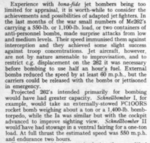GrauGeist
Generalfeldmarschall zur Luftschiff Abteilung
I'm not just talking out my hat...statiatics bear out that West Germany had a higher attrition rate than other nations and a high-position horizontal stabilizer is not the issue, it's the mission profile versus hardware intention that's the core of the problem. The Mig-21 had a high-mount horizontal stab and it didn't have flight profile issues, the C-5 had a high-mount horizontal stab and it didn't have flight profile issues - the list goes on...

